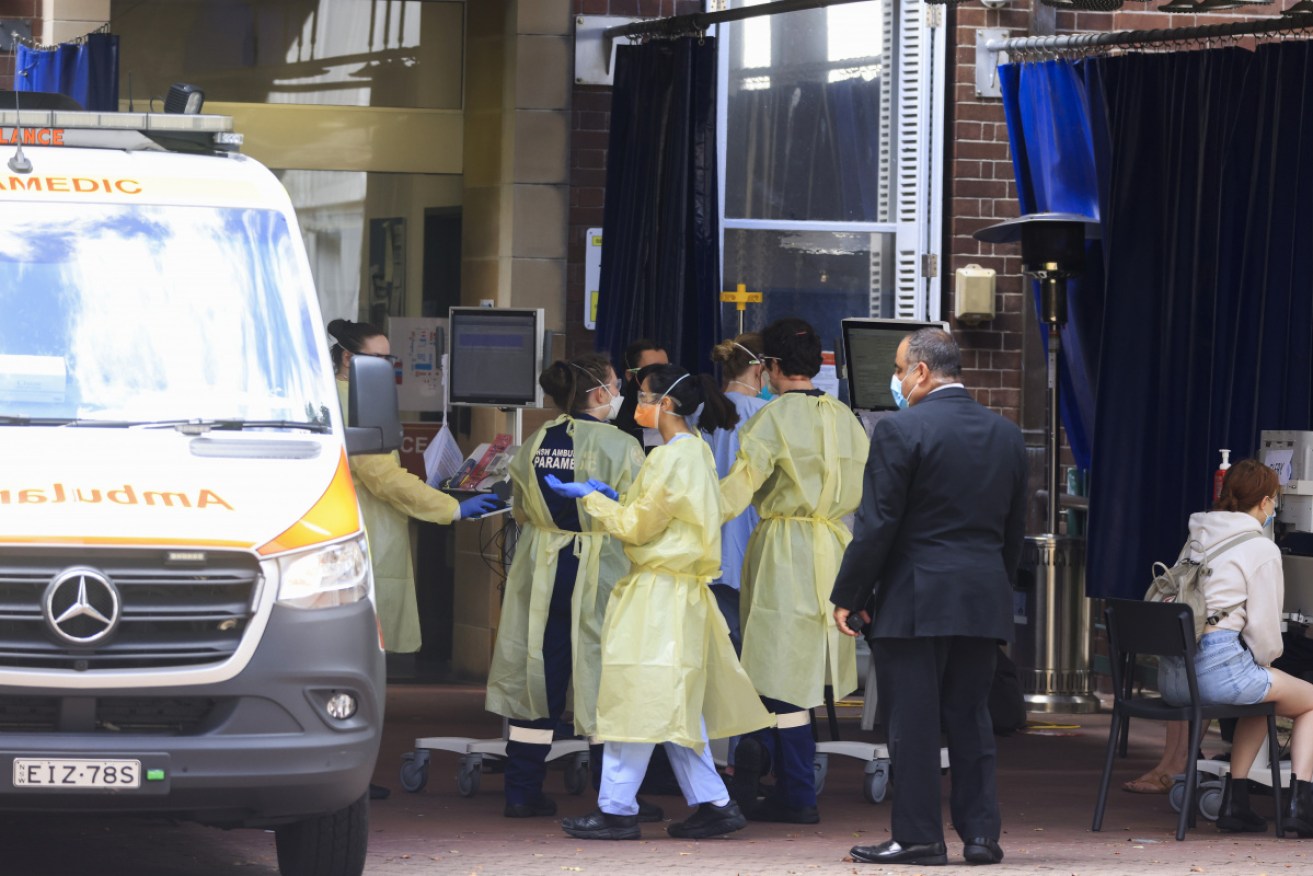CHO reveals common conditions behind elevated virus risks


Nurses "desperately need" NSW to commit to improving staff-to-patient ratios, their union says. Photo: Getty
NSW’s chief health officer has revealed the surprisingly common conditions that can lead to a elevated risk of death from COVID, as the state confirmed a record day for fatalities.
The explanation came on the day as NSW passed 1000 fatalities since the pandemic began, with 46 more reported on Friday.
It was also Australia’s deadliest day in the pandemc yet, with 88 virus-related fatalities eclipsing the previous record of 78 set on Tuesday.
There were a further 20 deaths in Victoria, 13 in Queensland and one in Tasmania, the state’s first COVID fatality for almost two years.
There were two deaths in the ACT, an equal high for the pandemic, along with six in South Australia.
In NSW, the coroner is also investigating the death of an eight-week-old baby who had been diagnosed with COVID. The baby, from the Hunter New England region, died in December but was not included in Friday’s figures because the coroner is yet to rule if COVID was the cause of death.
CHO Kerry Chant said the findings would be released once the family and clinicians were informed of “the contribution that COVID may or may not have made”.
The death is the fourth known fatality linked to COVID-19 in Australia in a child aged under 10 years – and by far the youngest.
In November, Victoria reported the death of a child with “other serious comorbidities” while in December a South Australian child under two died. A three-year-old NSW boy with a rare genetic disease died in January after testing positive to the virus.
“This illustrates that while over 90 per cent of the population and all of the age cohorts have received two doses, almost half of the deaths are among younger people or occurring in those that are not vaccinated,” Dr she said.
Of the 28 dead, 24 had what health authorities consider to be underlying conditions (including many with multiple conditions). Many were common among Australians.
They were:
- significant heart or valvular disease – 10
- obesity – 6
- chronic lung disease – 6
- diabetes – 7
- significant kidney disease – 6
- significant rheumatological diseases – 2
- other autoimmune diseases – 3
- severe liver disease – 4
- cancer – 4
- significantly immunocompromised – 5
- significant mental health illness – 1
- chronic neurological disorders – 4
- palliative care pathway – 1
“My key message is this data and all available scientific evidence that I have seen – and new data emerges every day – confirms the critical importance of a booster dose and getting that booster quickly and promptly to afford the maximum protection against the Omicron,” Dr Chant said.
“Please get boosted and reach out to anyone you know – your friends, family, colleagues – and support them getting vaccinated. It is critical, and do it as soon as possible.”
She said NSW could still expect high death numbers for weeks as there was a “significant lag” of two-three weeks between someone testing positive to the virus and dying.
However, Premier Dominic Perrottet said there were “reassuring signs” for the NSW outbreak despite the high fatality figure.
Government modelling has the state tracking better than its envisioned “best-case scenario”, which projected more than 3000 people in hospital and 270 in intensive care.
The number of people in ICU with the virus in NSW fell by three to 209 on Friday, while 68 people remained on ventilators.
“The figure today provides some reassurance in terms of the situation here in NSW,” Mr Perrottet said.
There are still capacity and workforce issues in hospitals, although the number of available frontline workers is increasing.
The number of furloughed workers had dropped below 5000, after previously topping 6000, Mr Perrottet said.

Victoria has begun a four-day booster vaccine blitz.
Optimism for Victoria
Victoria has begun a four-day booster shot blitz as it confirms its Omicron outbreak also appears to have peaked.
Victoria had 18,167 COVID-19 cases on Friday – down from nearly 22,000 on Thursday.
“It is something like a two-week period since we had numbers as low as this. Things are, hopefully, demonstrating that we are getting beyond the peak,” Treasurer Tim Pallas said.
There were also a further 20 deaths in Victoria on Friday.
Hospital figures have dropped by 110 to 1096, while there are 121 Victorian COVID patients in intensive care. They include 34 people on ventilation.
The state will offer public sector workers – more than 300,000 teachers, paramedics, police officers, firefighters and other employees – a half-day’s paid time off to get booster jabs.
Victoria’s third dose rate has lifted to 28 per cent as the four-day ‘booster blitz’ began at eight state-run hubs on Friday.
Hours at major hubs including Bendigo, La Trobe University and Sandown have been extended, while more than 100 GPs and pharmacies across the state will also provide additional appointments at the weekend.
Chief health officer Brett Sutton said the blitz was off to a strong start, with 36,000 bookings in the past four days.
“We did see an initial spike in online bookings, up 90 per cent in 24 hours on Tuesday,” he said.
He said Victoria’s booster levels were comparable to those in the US, which started its national vaccination program earlier than Australia.
Earlier this week the state cut the interval between second and third doses to three months in government clinics.
-with AAP








